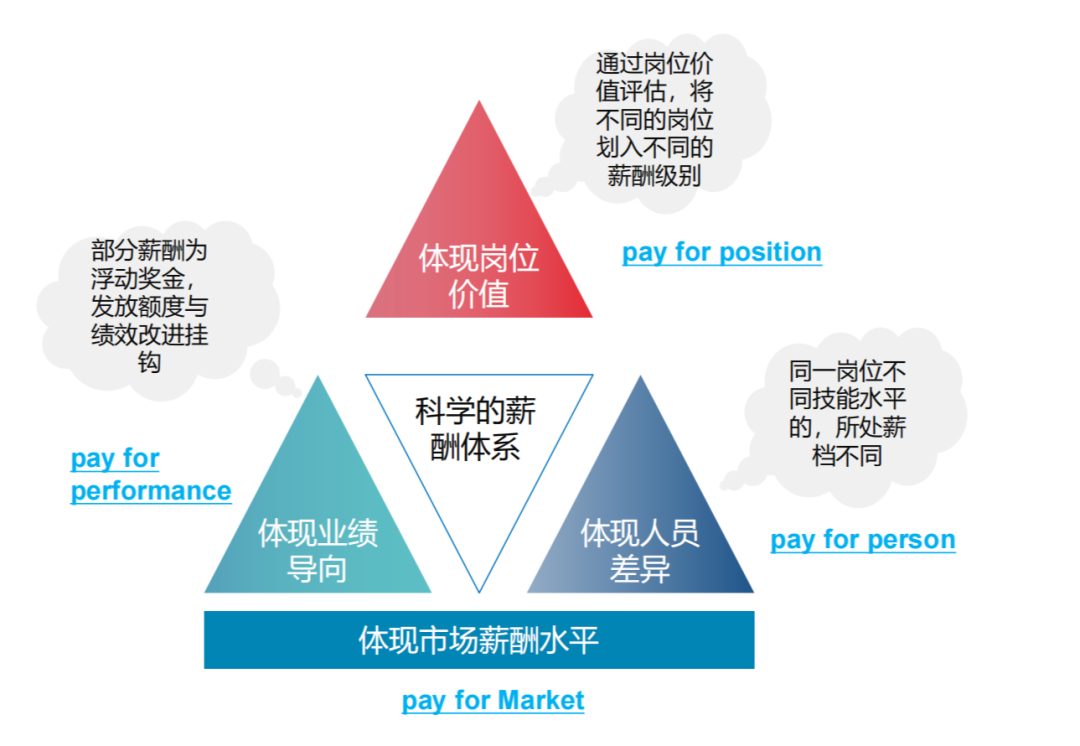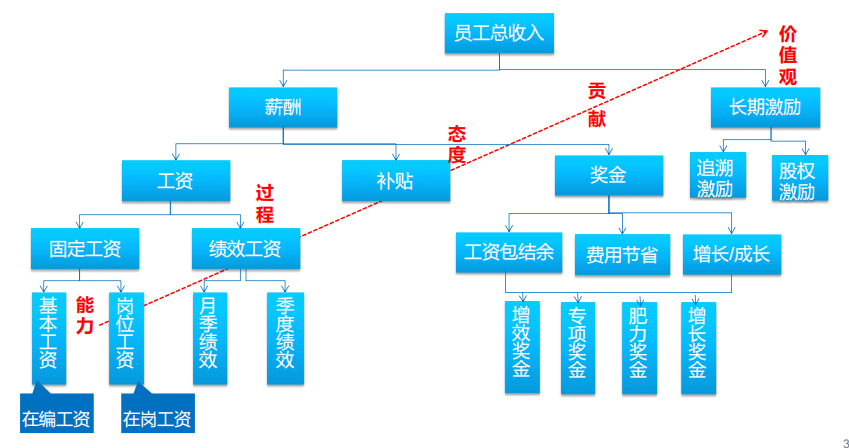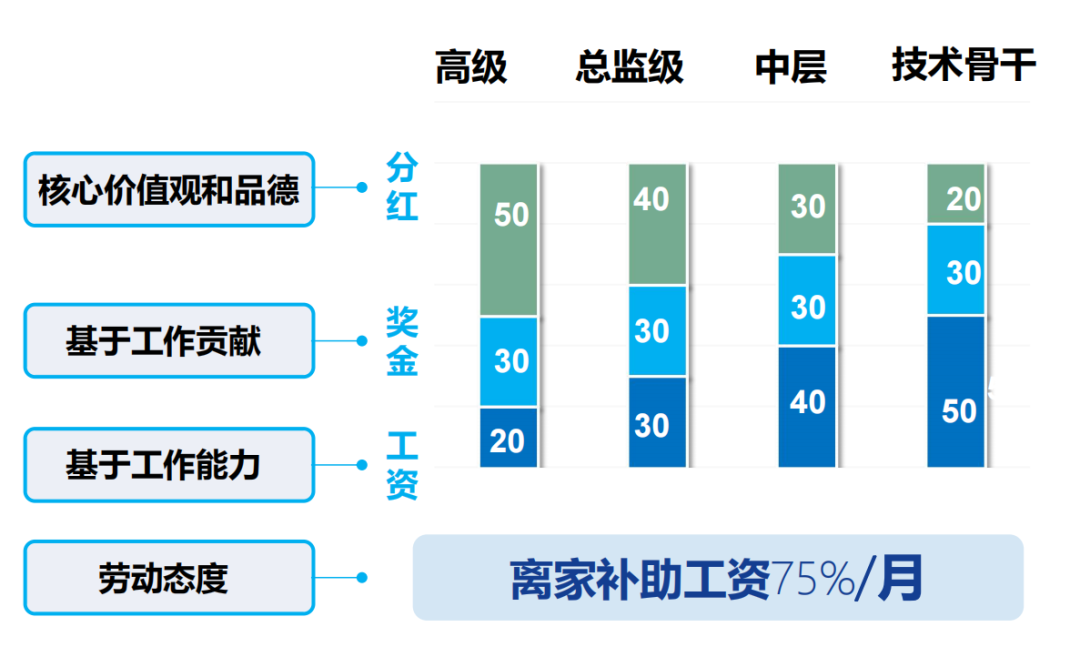
1
The Basic Model of Compensation Design

①Reflecting Job Value: Salaries are based on job value. The company has an organizational structure, which corresponds to different positions, each with varying values. Through job value assessment, different positions are classified into different salary levels.
②Reflecting Performance Orientation: Salaries are based on employee performance orientation. This part reflects variable bonuses, where the amount is linked to performance improvement.
④Reflecting Market Compensation Levels: Salaries are based on market benchmark compensation levels. To be attractive and competitive in the market is beneficial for attracting and retaining talent.
Based on job value, the company categorizes different job levels and combines factors of performance, capability, and market to design a salary payment model.
2
Huawei’s Compensation Design and Structural Management

Total compensation includes salary, allowances, bonuses, equity incentives, and benefits. Salary is the basic part, ensuring employees’ basic income; allowances are provided based on job conditions and working environment; bonuses are awarded based on performance results and are variable. Equity incentives are a form of long-term motivation; benefits include both cash and non-cash benefits, including various allowances for living expenses.
Each compensation element has a certain degree of incentivization and varies in proportion, influencing each other. For example, some positions may have high salaries and low bonuses, while others may have low salaries and high bonuses.

Employees’ total income is divided into salary income and long-term incentives. Salary generally includes wages, bonuses, and allowances, while long-term incentives include retroactive incentives and equity incentives.
Wages are further divided into fixed wages and performance wages. Fixed wages include basic wages and position wages, determined based on capability and job value; performance wages include monthly and quarterly performance, distributed based on process.
Allowances are provided based on labor attitudes. For instance, employees in challenging work environments receive corresponding allowances. Bonuses are awarded based on contributions and may include performance bonuses, special awards, productivity bonuses, and growth bonuses.
Long-term incentives are based on core values and are awarded based on the long-term results of employees’ efforts.


The above is an introduction to the basic concepts of enterprise compensation design, hoping to provide the correct direction and clear ideas for companies in compensation design. Of course, specific methods and implementation steps should be tailored to the actual situation of the enterprise. If you have questions or needs in this regard, feel free to further consult professional instructors for in-depth discussions.
Previous Recommendations
A Comprehensive Explanation of 36 Advanced Understandings of Compensation!
Setting Goals Always Involves Negotiation; Use Budget Management to Break the Deadlock!
A Thorough Explanation of the 6 Core Points of Organizational Performance Management!
The 4 Stages of Comprehensive Budget Closed-loop Management!
Why Implement Comprehensive Budgeting? 4 Aspects to Build a Closed-loop Management of Resource Allocation!

About Zhong En

